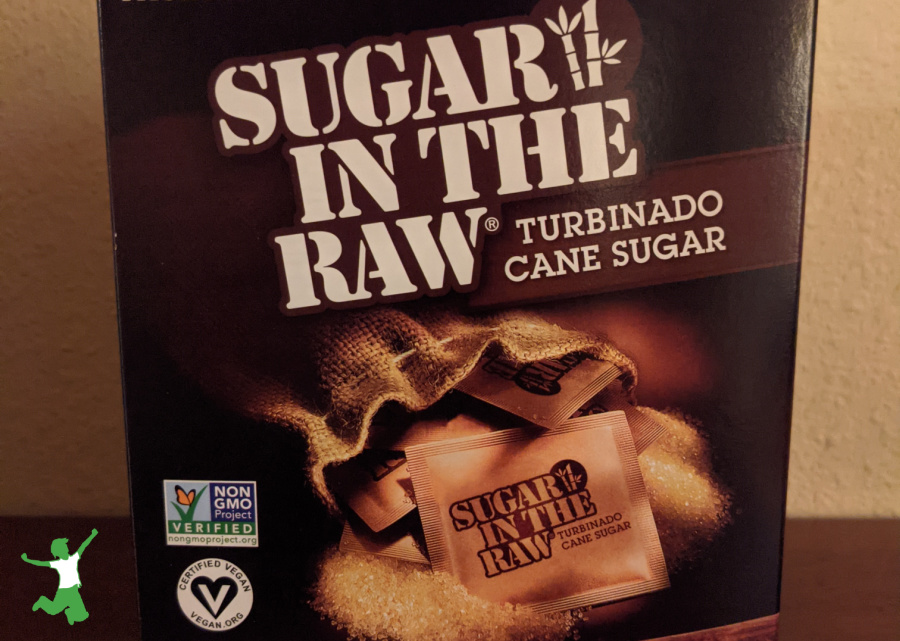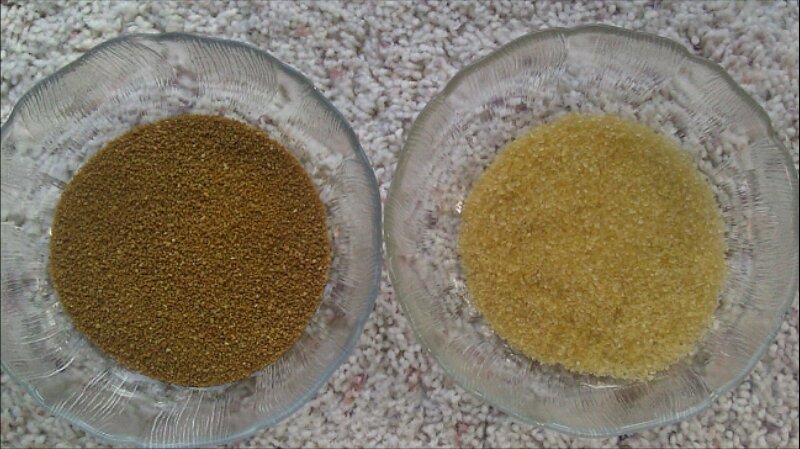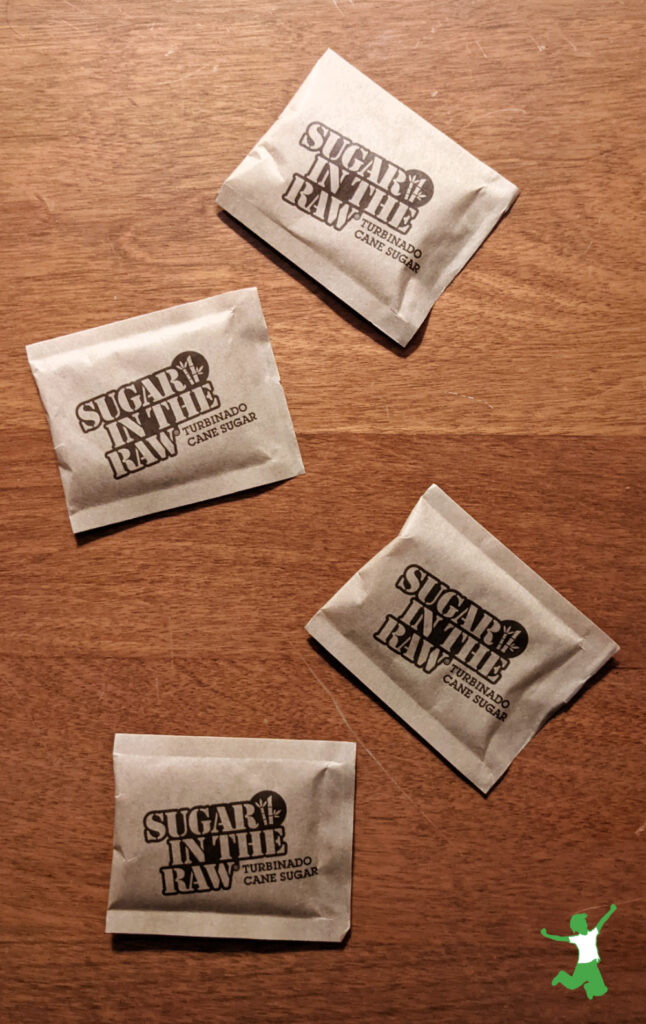Examination of the marketing claim of Sugar in the Raw and whether it is a whole, unprocessed sweetener retaining all the minerals of raw cane juice.

If a food is labeled as “raw”, what exactly does that mean?
To a consumer like me, raw means that the food is completely unadulterated. It has not in any way changed from its original natural form.
In other words, nothing has been added, removed, or heated to a temperature that would change any of the inherent nutritional characteristics.
Unfortunately, to food manufacturers, the definition of “raw” can be quite different.
In fact, raw to Big Food can translate to highly processed, industrialized food!
I’ve written before about how most raw cheese at the store is not raw at all in reality! In addition, cold-pressed raw milk and cold-pressed juice are not actually fresh either.
Sugar in the Raw Marketing Ploy
Another fake raw food at the store that is fooling a whole lot of people is “Sugar in the Raw”. It is also known as turbinado sugar or natural cane sugar.
But what about the “Good Housekeeping” seal of approval that sometimes appears on the box?
Doesn’t that mean that the Sugar in the Raw product is legitimate and to be trusted in its labeling claims?
Apparently not. Here’s what the manufacturer of Sugar in the Raw has to say about its product:
Enjoy sweet moments naturally with Sugar In The Raw®, our all-natural Turbinado sugar grown in the tropics. The hearty, golden crystals are never bleached, so they keep the rich flavor and color of their natural molasses. So go on, stir it in or sprinkle it on. Bake and cook with it too. Whatever you do, just do it naturally with Sugar In The Raw®.
It seems that just because Sugar in the Raw is unbleached makes it raw.
Perhaps that is what the USDA allows when it comes to labeling sugar products.
To me, sugar that is truly raw means much more than just unbleached. It means that nothing has been removed or added as well.
The marketing of this product is so sneaky because it leads the consumer to believe that the natural molasses is intact.
And, for Sugar in the Raw, a small amount of the molasses is indeed intact because it is a darker color than white sugar.
The truth, however, is that MOST of the molasses HAS been stripped away.
Comparison to Sucanat

Check out the picture above which shows a bowl of Sugar in the Raw next to a bowl of sucanat.
Notice the dark brown color of sucanat which is truly unprocessed cane sugar with all minerals, nutrients and molasses intact.
The lighter color of Sugar in the Raw indicates that the manufacturer has removed much of the mineral content.
In other words, the much darker sucanat visually demonstrates that Sugar in the Raw is a fake food masquerading as real.
It is an adulterated product contrary to the sneaky claims by the manufacturer.
What is the Best Cane Sugar?
Looking for the best and most nutritious form of cane sugar for your homemade cookies and cakes?
Sucanat is it! It is the best alternative to white or brown sugar substituted 1:1 in all your recipes.
It is best to bypass Sugar in the Raw or other turbinado sugar brands.
Florida Crystals is another cane sugar brand missing most of the molasses, so beware!
Most White or Brown Sugar is GMO
Another HUGE problem to watch out for is that most white or brown sugar in North America is partially or totally beet sugar. This sweetener is nearly always GMO unless certified organic.
GMO beet sugar is visually and taste-wise completely indistinguishable from white cane sugar.
Is beet sugar healthy? While it may seem so because it comes from a vegetable, the truth is that it is not!
Sugar from sugar beets is nutritionless and contaminated with gut-destroying glyphosate residue. Nearly 100% of farmers growing it use Monsanto’s Roundup Ready sugar beets.
A package of sugar must specifically state that the sweetener is cane sugar or be certified organic, else it is almost certainly a mixture that is wholly or partially GMO beet sugar.
Even brown sugar commonly contains at least some white beet sugar mixed with cane sugar molasses. The molasses from sugar beets is not fit for consumption.
To get the real thing, look for sucanat or sugarcane jaggery. Both are simply dried cane sugar juice with all minerals intact.
Ancestral cultures in India enjoyed these sweeteners for thousands of years.
What is a Safe Level to Consume?
While sucanat is your best choice when trying to find a truly natural and unprocessed substitute for processed cane sugar, be careful not to overdo.
Eating too much sugar can lower immunity, even if natural and unprocessed, in a manner similar to white sugar or partially processed sweeteners like Sugar in the Raw.
In summary, it always pays big dividends to do a little checking before buying into any labeling claims.
Sugar in the Raw is just another clever marketing scheme designed to make money off of consumers who genuinely are trying to improve their diets but don’t have quite enough information to make a completely informed decision.
Where to Find Truly Unprocessed Natural Sweeteners
Need help identifying truly natural, unprocessed whole sweeteners?
Please visit my Shopping Guide for a vetted list of vendors I buy from who offer quality sucanat, jaggery, coconut sugar, raw honey, maple syrup, and other wholesome sweeteners.
Beware that popular “healthy” sweeteners like xylitol and other sugar alcohols as well as brown rice syrup used in many organic foods and baby formula are highly processed. This is why making homemade baby formula is a better choice than commercial brands.









How about the fact that unprocessed cane sugar is never the color of Sugar in the Raw? The color gives it away … it is processed.
Turbinado sugar is spin-dried in a centrifuge to remove most of the molasses. I will contain 3 to 4 molasses. Muscovado sugar is not run through a centrifuge, or is only minimally spun in a centrifuge, so more of the molasses is left: 6 to 8 percent in light muscovado, 8 to 10 or even 12 percent in dark muscovado, and Sucanat, according to Wholsome Sweeteners (a subsidy of Billingtons) has 14% despite its comparatively light color. Demerara originally referred to turbinado from the Demerara River area of British Guyana. There is no official definition. The confusion should be ended by the FDC, which could establish standard definitions for the confusing terms and require the percentage of molasses to be printed on the container (for turbinado and muscovado, this would presumably be a range rather than the single correct figure that could be expected of fully refined sugar). Brown sugar is simply white sugar with some of the molasses added back in, usually 3.5% for light brown and 6.5% for dark, so they approximate turbinado and muscovado respectively. But the taste is never quite as rich and complex as that of the half-“raw” turbinado and the rawer muscovado. To decide which to use, test your recipe with several varieties.
So whats our answer regarding Sally’s advice on not using the succanut?
She doesn’t advice not to use sucanat as when she wrote Nourishing Traditions (you must have an old copy), sucanat was the equivalent of turbinado sugar. Sucanat is now the same as rapadura and is fine.
I just searched for Sucanat and found organic sucanat made by Wholesome Sweeteners. It states on their website that, “it’s made by simply crushing freshly cut sugar cane, extracting the juice and heating it in a large vat. Once the juice is reduced to a rich, dark syrup, it is hand-paddled. Hand paddling cools and dries the syrup, creating the dry, porous granules we call Sucanat. Nothing is added and nothing is taken out!”
Doesn’t the heating alter the composition of the sugar the same way Sugar in the Raw is changed by heating it? Your second paragraph states that you don’t like things that have been heated to change their composition but it seems as if it is a necessary part of the process of making sugar.
Low heat, not high heat, is used for sucanat
When I was in New Guinea, the national sugar company had to stop making white sugar while their factory was undergoing maintenance. This took months. During that time, many stores imported white sugar from Indonesia. The price of refined sugar skyrocketed.
I found the darker sugar produced by the national sugar company, which did not require the same equipment. It was in plentiful supply, was very inexpensive, and was much more delicious than refined sugar. It became my preferred sugar for all uses. The closest thing I have been able to find in the US is “Sugar in the Raw”.
That’s why I use it.
The closest thing to unprocessed sugar cane in the United States is sucanat, not Sugar in the Raw.
Try looking in asian supermarkets for sugar cane bars. they sell cane sugar that has been dried into bars
I grew up in Hawaii in the 70’s and our family used to take guests to the sugar can factory for tours every year. Those packets have had the label “Sugar in the Raw” and even the same font/picture on them for the past 40+ years (when C&H still ruled the sugar roost). I agree, that the label doesn’t meet the current definition of the word “Raw”, but just because the definition has evolved over the years, shouldn’t mean this company has to change their almost half-century logo. 🙂
Sugar In The Raw isn’t even “turbinado” sugar lol. It’s DEMERA SUGAR! Real Turbinado sugar is OPAQUE. Real Demera sugar is more TRANSLUCENT.
Either way, sugar is sugar. As long as the sugars i personally use are organic & non-gmo, i honestly couldn’t care less *shrug*.
*meant to put DEMERARA.
Moderation is key. Sugar in the raw is fine, I’ve been using it for years…